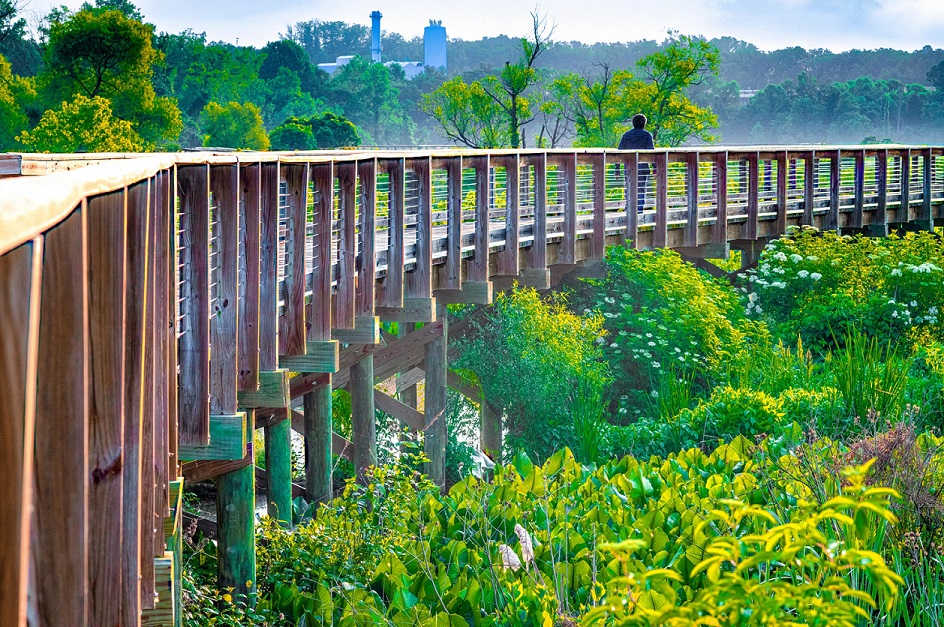Celebrate Earth Day at the Neabsco Boardwalk

(Photo by Charles Mitchell)
Earth Day is an annual celebration that honors the achievements of the environmental movement and raises awareness of the need to protect Earth’s natural resources for future generations. While Earth Day is celebrated each year on April 22, we’ll be celebrating a day early at our Science in the Park Earth Day at the Boardwalk event on Sunday, April 21, from11 am to 1 pm. This family-friendly event is free and open to all.
Visitors are invited to enjoy a stroll down the Neabsco Creek Boardwalk where there will be hands-on "Discovery Stations" set up along the way. Learn about the wetlands' most beautiful animals and the habitat they call home. Park naturalists will be on hand to discuss the mammals, birds, pollinators and plants that make the Boardwalk such an unforgettable experience and a perfect way to celebrate Earth Day!
Visitors can also participate in a fun scavenger hunt that can be done on your phone while at the Boardwalk.
If you’ve never visited the Neabsco Creek Boardwalk, it is a beautiful ¾ mile boardwalk that traverses the Neabsco Creek allowing patrons access to wetlands where the tall grasses and marsh filter pollution from the river and provide an essential habitat for many wildlife species. In addition to serving as a food source, the dense vegetation found in the wetlands provides a place for wildlife like beavers, muskrats, foxes, deer, fish, snakes, and frogs to build a home, reproduce and hide from predators.
The wetlands also provide important nesting habitats for many birds and waterfowl. For many species, like the Great Blue Heron, Canada goose, Belted Kingfisher and Wood Duck, the wetlands are their primary habitat. These species have made such comfortable homes here, they choose to never leave! Other species, like the Osprey, Snowy Egret, Red-Winged Blackbird, Tree Swallow and Common Yellowthroat migrate to other regions in the winter, returning to these beautiful wetlands every spring.
In addition, the wetlands are also home to many plant species, such as Swamp Rose Mallow (Hibiscus), the Paw-Paw (an edible yellow fruit), and a favorite to all critters, the Cattail. The wetlands are also an essential habitat for pollinators like butterflies, moths, beetles, birds, small mammals and bees.
“Wetlands are the unsung heroes of our environment,” says Environmental Recreation Specialist, Christy Mory, who coordinates the Science in the Park Program for Prince William County Parks and Recreation. “They filter pollution, buffer droughts, protect against floods and are an essential habitat for so many animals and plants.”
Want to help protect and preserve the wetlands? We encourage you to practice the seven principles of “Leave No Trace" when visiting the Neabsco Boardwalk or any of our parks.
To learn more about our Science in the Park program, click here.
Related links:
